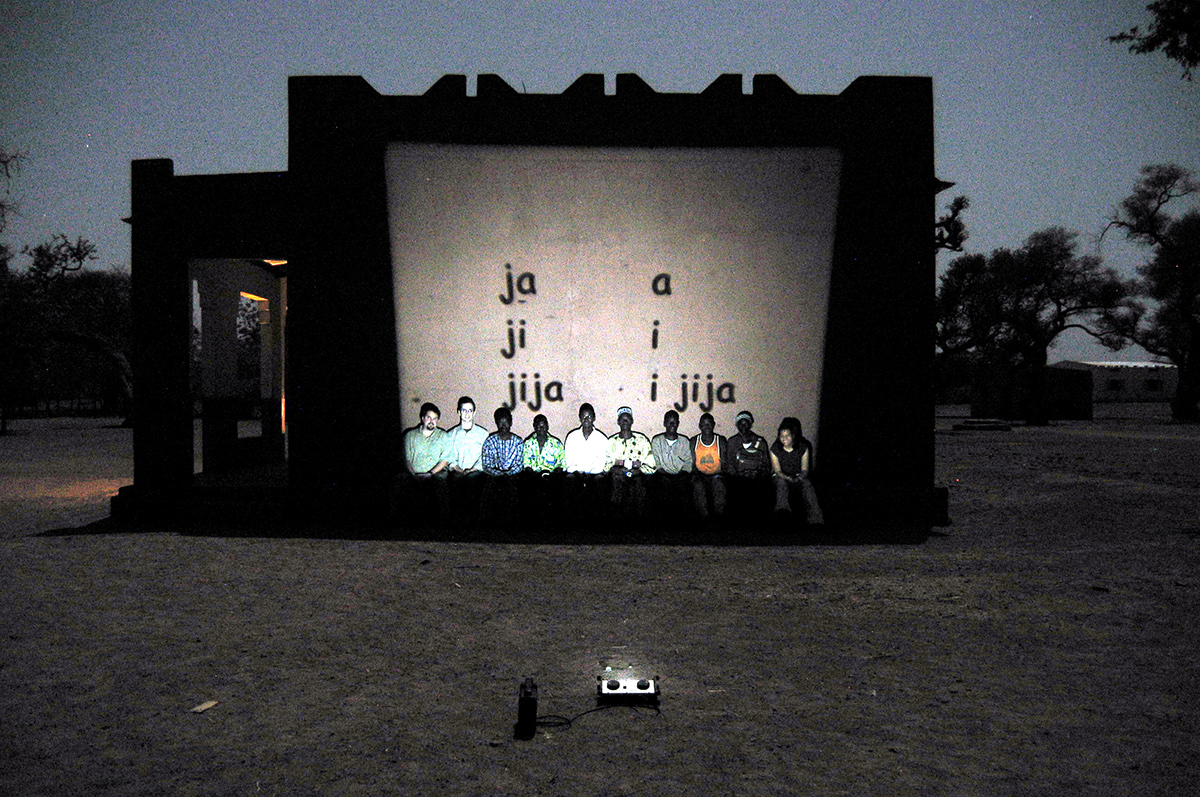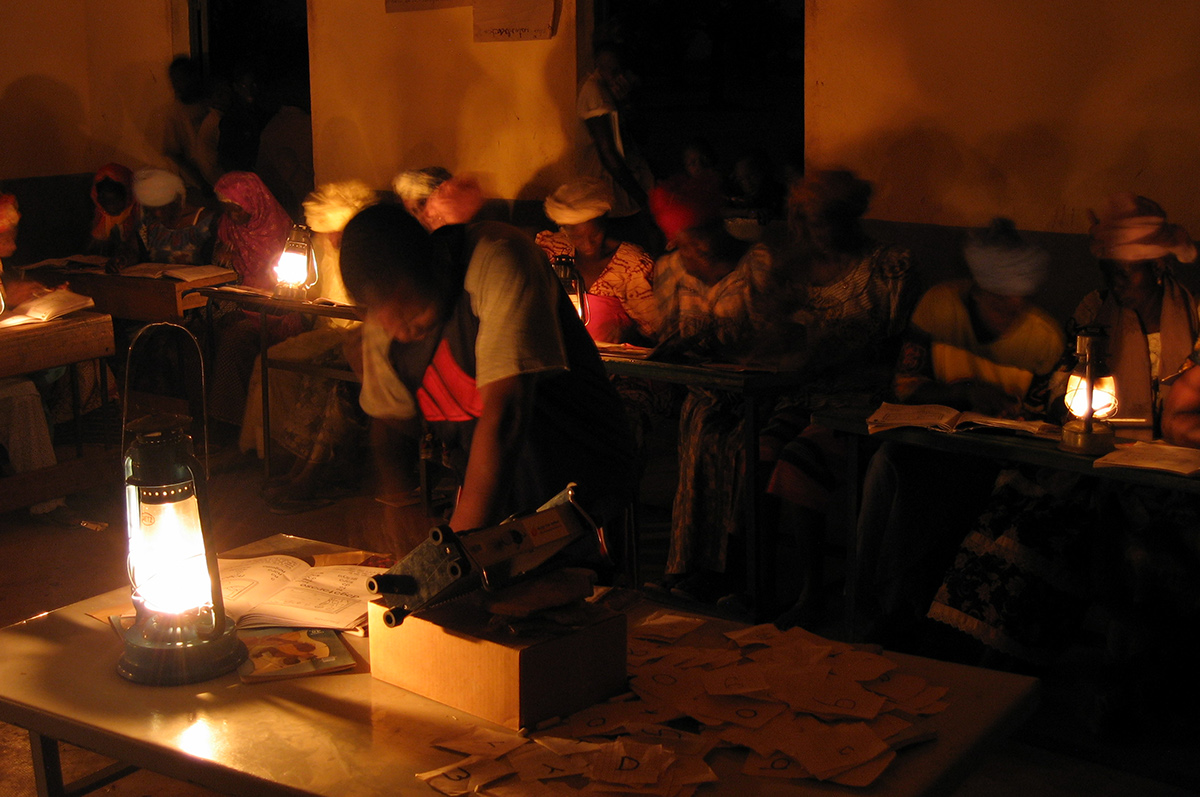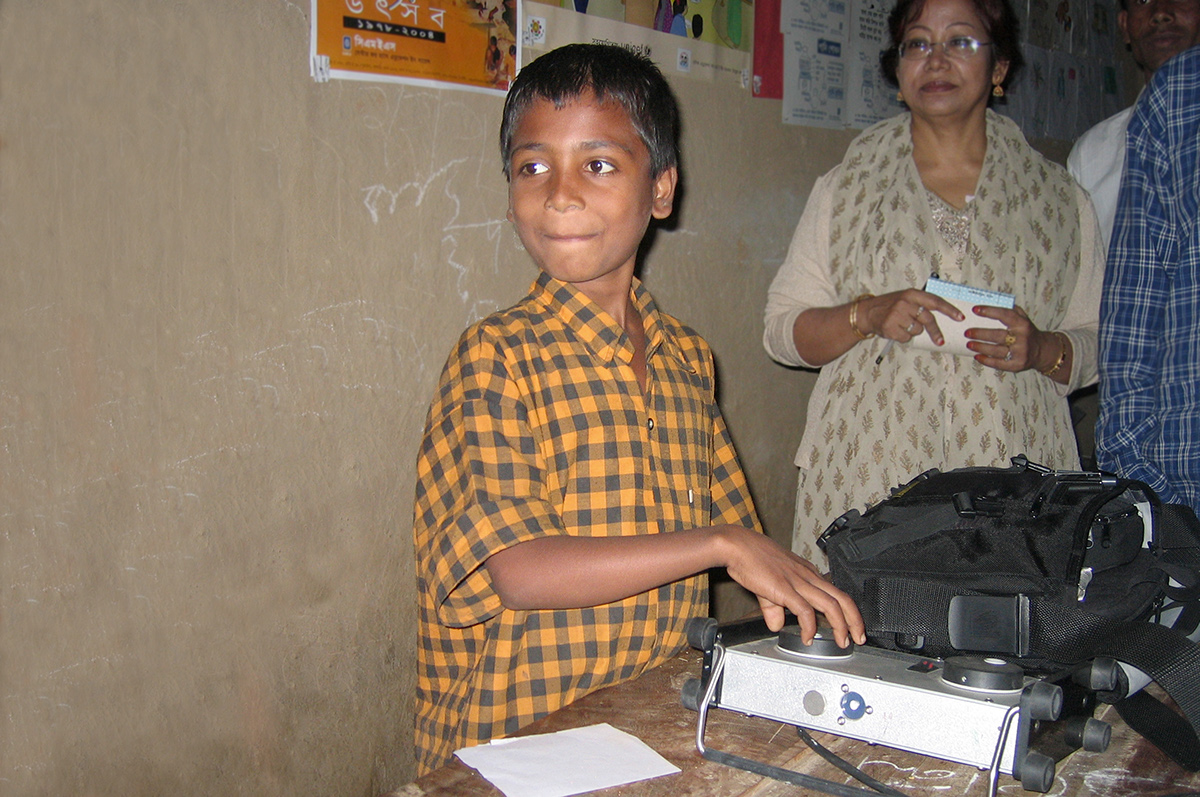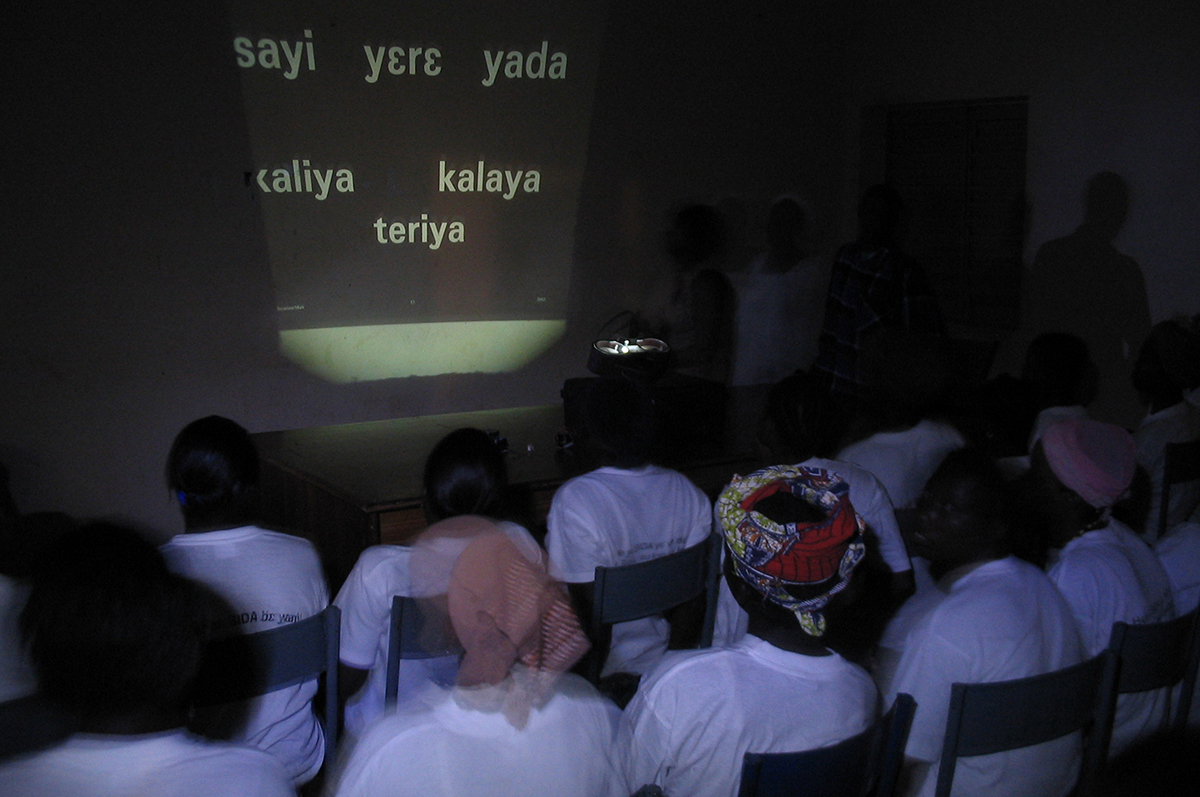Kinkajou: Microfilm Projector
a cost-effective microfilm projector to designed as a tool for night time literacy classes in low-resource settings
a cost-effective microfilm projector to designed as a tool for night time literacy classes in low-resource settings

NEED
One in five adults worldwide does not know how to read. In rural regions of West Africa, up to 75% of the population is illiterate. Literacy provides a solid foundation for poverty reduction and improves lives in very practical ways: enabling mothers to read expiration dates on medicine bottles; assisting farmers with reading application instructions on chemical packaging; and increasing the likelihood that women participate in the political process.
According to World Education, “It’s the lack of resources,”—specifically access to books and lighting—rather than a lack of interest in education that contributes to illiteracy rates. Since most adults work during the day, the majority of World Education’s students in Mali take classes at night. Residents of these rural communities lack access to electricity and, therefore, electric lighting.
One in five adults worldwide does not know how to read. In rural regions of West Africa, up to 75% of the population is illiterate. Literacy provides a solid foundation for poverty reduction and improves lives in very practical ways: enabling mothers to read expiration dates on medicine bottles; assisting farmers with reading application instructions on chemical packaging; and increasing the likelihood that women participate in the political process.
According to World Education, “It’s the lack of resources,”—specifically access to books and lighting—rather than a lack of interest in education that contributes to illiteracy rates. Since most adults work during the day, the majority of World Education’s students in Mali take classes at night. Residents of these rural communities lack access to electricity and, therefore, electric lighting.

APPROACH
To answer the challenge, Design that Matters partnered with World Education, founded in 1951, with educational programs tailored to local context and need implemented across 50 countries including Mali. The design process began with multiple rounds of fieldwork hosted by World Education in classrooms in Mali to observe conditions and gather feedback about device prototypes. DtM found:
(1) Each student had maybe fifteen minutes to learn during a two-hour class—the amount of time the classroom’s single kerosene lantern was close to their desk.
(2) Books disintegrate quickly in both the arid and subtropical climates in Mali, it is a logistical challenge to provide one copy for each student, and material selection is limited.
(3) To learn to write, the students depend heavily on the teacher who may have poor handwriting.
Through DtM’s collaborative design process, engineering and business students at MIT, Worcester Polytechnic, Babson College and Cambridge University in the UK in conjunction with industry volunteers, collaborated in the design of a learning tool. Later stages of the work leveraged industry experience from product design professionals as well as a unique opitcal design made affordable by donation from Fisher-Price and Optikos designer Dr. Steve Fantone.
To answer the challenge, Design that Matters partnered with World Education, founded in 1951, with educational programs tailored to local context and need implemented across 50 countries including Mali. The design process began with multiple rounds of fieldwork hosted by World Education in classrooms in Mali to observe conditions and gather feedback about device prototypes. DtM found:
(1) Each student had maybe fifteen minutes to learn during a two-hour class—the amount of time the classroom’s single kerosene lantern was close to their desk.
(2) Books disintegrate quickly in both the arid and subtropical climates in Mali, it is a logistical challenge to provide one copy for each student, and material selection is limited.
(3) To learn to write, the students depend heavily on the teacher who may have poor handwriting.
Through DtM’s collaborative design process, engineering and business students at MIT, Worcester Polytechnic, Babson College and Cambridge University in the UK in conjunction with industry volunteers, collaborated in the design of a learning tool. Later stages of the work leveraged industry experience from product design professionals as well as a unique opitcal design made affordable by donation from Fisher-Price and Optikos designer Dr. Steve Fantone.

INNOVATION
Tackling the need for both lighting and reading materials, the Kinkajou Microfilm Projector is a rugged, lightweight, low-power projection system, which uses a microfilm cassette to store up to 10,000 images at a fraction of the cost of paper books. The system also employs state-of-the-art LED lighting and low-cost plastic optics adapted from “View Master” toys to project an image large enough for the entire classroom to read. The design requires no tools more complicated than pocket change for maintenance, and includes a battery, charge controller and solar panel for off-grid use.
In 2004, with funding from USAID, World Education implemented Kinkajou Projectors in literacy centers in 45 Malian villages. After two years of use, over 3,000 adults have learned to read using these projectors. The results of an independent, two-year pedagogical impact study, completed in Mali with World Education in 2005, shows that performance in Kinkajou nighttime classes far exceeds that of non-Kinkajou nighttime classes, and even exceeds the performance of World Education’s daytime adult literacy classes.
“It is better, because without [the Kinkajou], when the teacher is writing on the board, students wait in the dark in vain, and they do nothing. We lose much time and the quality of handwriting is not good.”
Martine Sogoba, Literacy teacher (“karamogo”), Mali
DtM’s Kinkajou has received worldwide attention and recognition including the Tech Museum Award Laureate 2005, INDEX: Award Top Nominee 2005, Design News Awards 2004, MIT IDEAS International Technology Award 2003, Saatchi & Saatchi World Changing Ideas Award 2002 Finalist, exhibition in Cooper Hewitt’s “Design for the Other 90%” 2007 and Museum of Science, Boston 2003. DtM has received inquiries about the Kinkajou from 30 countries including Uganda, Kenya, Nigeria, Sri Lanka, Nepal and Honduras.
Tackling the need for both lighting and reading materials, the Kinkajou Microfilm Projector is a rugged, lightweight, low-power projection system, which uses a microfilm cassette to store up to 10,000 images at a fraction of the cost of paper books. The system also employs state-of-the-art LED lighting and low-cost plastic optics adapted from “View Master” toys to project an image large enough for the entire classroom to read. The design requires no tools more complicated than pocket change for maintenance, and includes a battery, charge controller and solar panel for off-grid use.
In 2004, with funding from USAID, World Education implemented Kinkajou Projectors in literacy centers in 45 Malian villages. After two years of use, over 3,000 adults have learned to read using these projectors. The results of an independent, two-year pedagogical impact study, completed in Mali with World Education in 2005, shows that performance in Kinkajou nighttime classes far exceeds that of non-Kinkajou nighttime classes, and even exceeds the performance of World Education’s daytime adult literacy classes.
“It is better, because without [the Kinkajou], when the teacher is writing on the board, students wait in the dark in vain, and they do nothing. We lose much time and the quality of handwriting is not good.”
Martine Sogoba, Literacy teacher (“karamogo”), Mali
DtM’s Kinkajou has received worldwide attention and recognition including the Tech Museum Award Laureate 2005, INDEX: Award Top Nominee 2005, Design News Awards 2004, MIT IDEAS International Technology Award 2003, Saatchi & Saatchi World Changing Ideas Award 2002 Finalist, exhibition in Cooper Hewitt’s “Design for the Other 90%” 2007 and Museum of Science, Boston 2003. DtM has received inquiries about the Kinkajou from 30 countries including Uganda, Kenya, Nigeria, Sri Lanka, Nepal and Honduras.


LEARN MORE ABOUT THE KINKAJOU MICROFILM PROJECTOR
Kinkajou Project Page on the Design that Matters Website
Kinkajou Project Page on the Design that Matters Website

